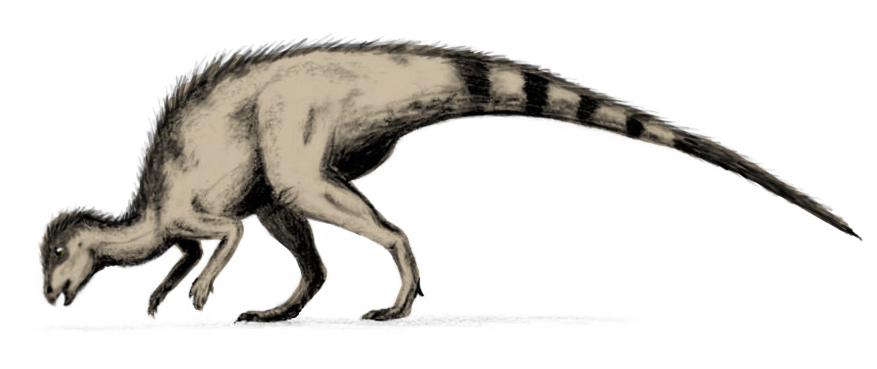Hypsilophodon

Hypsilophodon (meaning “Hypsilophus-tooth”) is an ornithopod dinosaur genus from the Early Cretaceous period of England.
The first remains of Hypsilophodon were found in 1849; the type species, Hypsilophodon foxii, was named in 1869. Abundant fossil discoveries were made on the Isle of Wight, giving a good impression of the build of the species. It was a small bipedal animal with an herbivorous or possibly omnivorous diet. Hypsilophodon reached up to 1.8 metres (5.9 ft) in length, weighed about 20 kg (45 lbs), and was an agile runner. It had a pointed head equipped with a sharp beak used to bite off plant material, much like modern day parrots.

Older studies have given rise to number of misconceptions about Hypsilophodon: that it would climb trees, were armoured, reached a length of 2.3 metres (7.5 ft) and were also found outside of Wight. During the past decades new research has gradually shown this to be incorrect.
Hypsilophodon was a relatively small dinosaur, though not quite so small as, for example, Compsognathus. For Hypsilophodonoften a maximum length of 2.3 metres is stated. This has its origin in a study of 1974 by Galton, in which he extrapolated a length of 2.28 metres based on specimen BMNH R 167, a thigh bone. However, in 2009, Galton concluded that this femur in fact belonged to Valdosaurus and downsized Hypsilophodon to a maximum known length of 1.8 metres, the largest specimen being NHM R5829 with a femur length of 202 millimetres. Typical specimens are about 1.5 metres long. Hypsilophodon would have reached up to half a metre in height. In 2010, Gregory S. Paul estimated a weight of 20 kilograms (44 lb) for an animal two metres in length.
Like most small dinosaurs, Hypsilophodon was bipedal: it ran on two legs. Its entire body was built for running. A light-weight, minimized skeleton, low, aerodynamic posture, long legs and stiff tail, immobilised by ossified tendons, for balance: all would have allowed it to travel remarkably fast for its size. Galton in 1974 concluded it would have been among the ornithischians best adapted to running.









